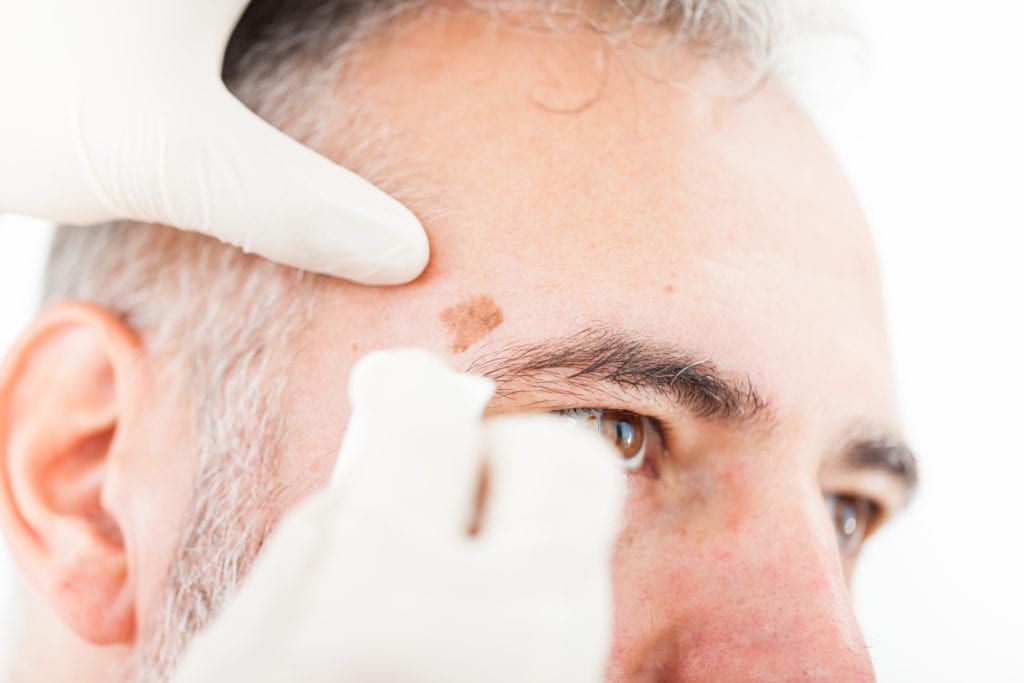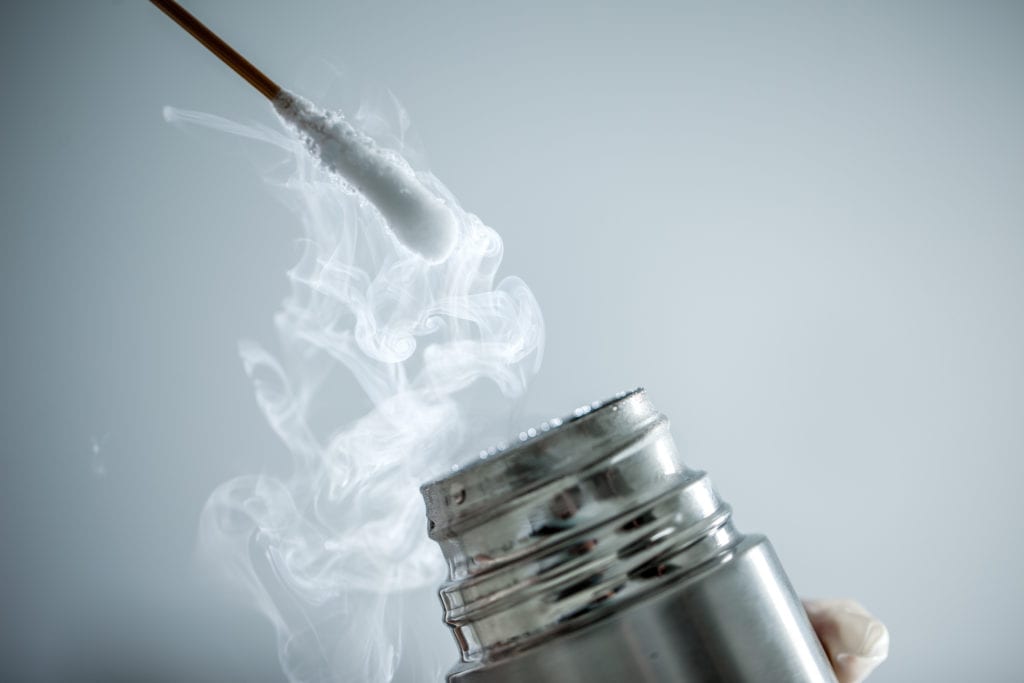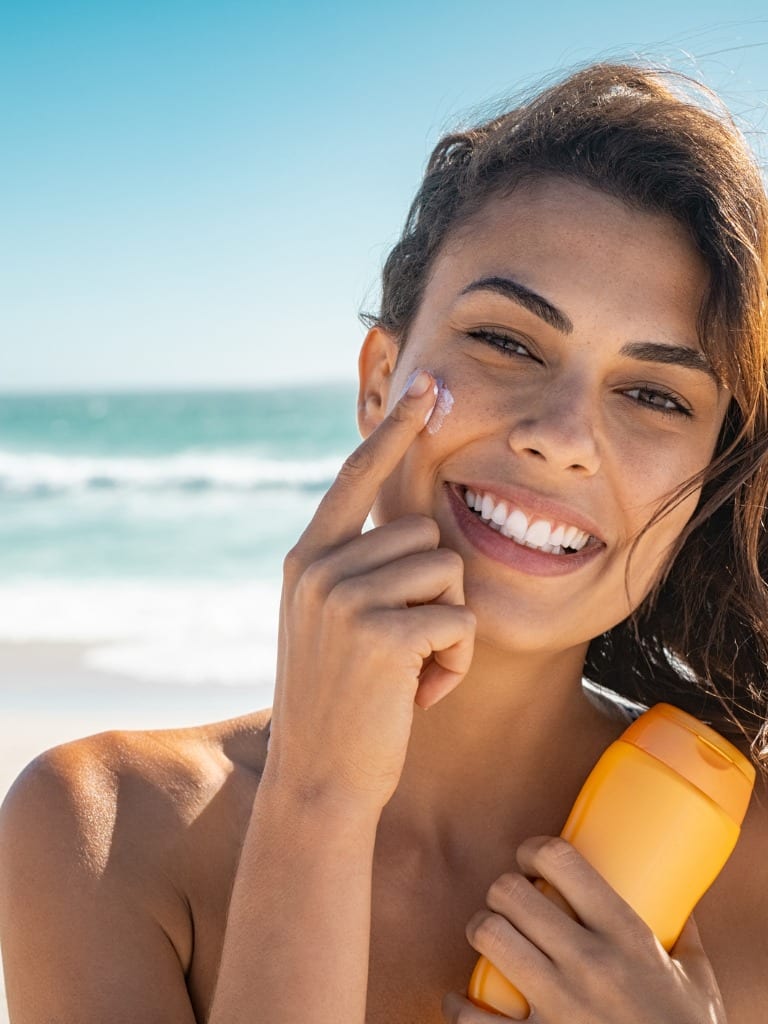Actinic Keratosis FAQs

What is actinic keratosis? »
 Actinic keratosis is a pre-cancerous skin lesion on the skin. They are usually rough, scaly patches that form on the areas that receive extensive sun exposure: the face, lips, ears, backs of the hands, forearms, scalp, or neck. These growths develop slowly and don’t have any signs or symptoms other than their appearance. A small percentage of actinic keratoses can eventually become skin cancer.
Actinic keratosis is a pre-cancerous skin lesion on the skin. They are usually rough, scaly patches that form on the areas that receive extensive sun exposure: the face, lips, ears, backs of the hands, forearms, scalp, or neck. These growths develop slowly and don’t have any signs or symptoms other than their appearance. A small percentage of actinic keratoses can eventually become skin cancer.
What do actinic keratoses look like? »
These growths are not painful and are not overly disfiguring because they remain small. These are the signs:
- The rough, scaly, dry patch of skin
- Usually less than 1 inch in diameter
- Flat to slightly raised patch or bump atop the skin
- Sometimes can be hard and wart-like
- Color may be pink, red, or brown
- May itch or burn when brushed
Is actinic keratosis a form of skin cancer? »
These growths are “pre-cancerous,” meaning they are not cancer, but they may develop into skin cancer. If an actinic keratosis is left untreated it can turn into a squamous cell carcinoma. This happens in only 5 to 10 percent of cases of actinic keratoses, but it’s still wise to have the spot looked at by a board-certified dermatologist.
What are the symptoms of actinic keratoses? »
These growths are not painful and are not overly disfiguring because they remain small. These are the signs:

- Rough, scaly, dry patch of skin
- Usually less than 1 inch in diameter
- Flat to slightly raised patch or bump atop the skin
- Sometimes can be hard and wart-like
- Color may be pink, red, or brown
- May itch or burn when brushed
What causes actinic keratoses to form? »
Actinic keratoses develop as the skin’s response to frequent or intense exposure to ultraviolet radiation from the sun or tanning beds.
Who is most prone to developing an actinic keratosis? »
Actinic keratoses develop due to exposure to UV radiation. But not everyone’s skin reacts the same way; one person may develop actinic keratosis, while another with the same exposure shows no signs. They are anything but rare, with estimates placing the number of Americans with one or more actinic keratosis at 58 million.
These are certain risk factors that make a person more likely to develop an actinic keratosis:
- You are over age 40
- Live in a sunny locale
- Have a history of sunburns
- Have red or blond hair
- Have blue or light-colored eyes
- Tend to freckle or burn when exposed to sunlight
- Have a personal history of actinic keratoses or skin cancer
- Have a weak immune system due to chemotherapy, AIDS, or other causes

How is actinic keratosis diagnosed? »
These are not complicated diagnoses. Your dermatologist will likely be able to determine if that lesion on your skin is an actinic keratosis with a simple examination. If there is any doubt, your dermatologist may use a curette, a small spoon-shaped tool, to scrape the lesion for a biopsy. Often, regardless of the result of the biopsy, this action can remove the entire actinic keratosis.
Once a diagnosis has been made, it’s likely your dermatologist will recommend treatment, such as freezing the lesion with liquid nitrogen. If treated, virtually all actinic keratoses can be cleared up or removed before they turn into squamous cell carcinoma.
How are actinic keratoses treated? »
Because actinic keratoses may develop into cancer, it’s a good idea to remove them as a precaution. Here are the typical methods:
Medications
These medications have been developed over the past decade or so. They cause the body to react and attack the abnormal actinic growths. These creams and gels cause inflammation and redness and then the actinic keratoses begin to crust and peel off. These are prescription drugs that are usually applied to the entire affected area:
- Fluorouracil cream
- Imiquimod cream
- Ingenol mebutate gel
- Diclofenac gel
Surgical removal
 Cryotherapy
Cryotherapy
— Actinic keratoses can be removed by freezing the growth with liquid nitrogen. This causes the lesion to crust and peel off. This takes just a few minutes.
Curettage
— A small scoop-shaped blade, known as a curet, is used to scrape off the damaged cells. Using the curet may complete the procedure, or we may also use electrosurgery, where an electric current destroys the affected tissue and closes off the blood vessels.
What is the Difference Between Actinic Keratosis and Seborrheic Keratosis?
Actinic keratosis and seborrheic keratosis are relatively similar in the way that they present. They can occur in the same general areas, including the face, neck, and shoulders. They may form in clusters and may look like scaly patches of skin or fleshy warts. The notable difference between these two types of growths is that, while actinic keratoses can eventually become cancerous, seborrheic keratoses do not.
Can Actinic Keratosis Heal on its Own?
Sometimes, an actinic keratosis will go away spontaneously. However, because these growths are related to sun exposure and sun damage that rises to the epidermis from deeper layers of the skin, it is very likely that new AK lesions will sprout up over time. It is impossible to determine which AKs will develop into skin cancer and which will remain benign. As a precaution, your doctor may advise you to remove these growths before they turn into skin cancer.
Does Actinic Keratosis Spread?
Actinic keratoses can be somewhat unpredictable. Usually, these pre-cancerous growths remain localized. They may go away and then new ones return. However, if an AK lesion becomes squamous cell carcinoma, which can occur, there is a risk that the cancerous cells will spread to nearby lymph nodes. A consultation with a board-certified dermatologist who specializes in skin cancer diagnosis and treatment is warranted for any person who displays the signs of actinic keratosis.
How Long Does Actinic Keratosis Take to Develop?
Actinic keratosis lesions are growths that can occur many years after excessive sun exposure has caused DNA damage in the skin cells. This condition is usually seen in middle-aged adults, revealing the massive amount of time between original sun exposure and the development of tissue irregularities. That said, once you have an AK lesion, or many, these growths may transform into skin cancer within a three-year period. It is critical that you continue to perform skin cancer checks on a monthly basis so that you can be very familiar with your skin in general and, specifically, notice when a spot or growth changes.
What is Hypertrophic Actinic Keratosis?
Hypertrophic actinic keratosis is a subtype of an AK lesion, a common one, that is primarily related to excessive sun exposure. People who had experienced at least one major sunburn in childhood have a higher chance of developing this type of actinic keratosis. This subtype has been found to be more likely to develop into squamous cell carcinoma over time. It is important to learn how to differentiate between hypertrophic actinic keratosis and other subtypes. Your dermatologist can educate you regarding this matter and may perform dermoscopy to identify AKs on your skin as hypertrophic.
Photodynamic therapy
— In this method, a light-sensitive chemical is first applied to the affected skin. Then a special light is directed onto the area. This destroys the actinic keratoses.
Is there recovery after having an actinic keratosis removed? »
These are very minor procedures and these lesions do not grow to great depths. Removing them with curettage typically requires only a bandage. Cryotherapy can create a boil on the area for a day or so, and then it goes away, and the spot begins the process of drying out and peeling off. Light treatments also simply cause the actinic keratosis to peel away.
There isn’t any downtime or recovery after having these removed.
What is the cure rate for actinic keratosis? »
Removing these growths before they become skin cancer is 100 percent successful. Other growths may develop, but they can be removed the same way.
Can an actinic keratosis recur? »
Once an actinic keratosis is frozen and peels off or is removed with another method, it is usually gone. The method may not remove all of the damaged cells and it may need a second treatment later. But generally, treatments successfully remove these lesions for good. They don’t recur.
Of course, once your skin has received lots of UV radiation over your lifetime and if you’ve already developed one or more actinic keratoses, you’re more likely to develop more in the future. That’s why you need to see a board-certified dermatologist at least once every year.
What should I do to avoid developing new actinic keratoses? »
Sun damage and the mutation of skin cells into actinic keratoses and skin cancer is a cumulative thing. Over time and more and more hours in the sun, you increase the odds of developing an actinic keratosis or even skin cancer.
 These are steps you should take to protect your skin and minimize the development of lesions such as actinic keratoses:
These are steps you should take to protect your skin and minimize the development of lesions such as actinic keratoses:
- Limit your time in the sun — Sun exposure is what’s behind your actinic keratoses, so try and limit your exposure, especially between 10 a.m. and 2 p.m.
- Use sunscreen — Sunscreen helps keep your skin from developing actinic keratoses and the sun damage that makes you look older, as well. Get a broad-spectrum sunscreen of 30 SPF or more.
- Cover up — Wear hats and clothing that protects your arms and legs.
- Say no to tanning beds — Tanning beds are every bit as harmful as the natural sun for UV radiation.
- Check your skin — Keep an eye on your skin yourself. Look for the signs of actinic keratoses and skin cancers. See a dermatologist once every year after you turn 40, earlier if you have fair skin and have had lots of sun exposure.
Start Your Treatment For Actinic Keratosis Today »
If you’re interested in learning more about actinic keratosis or would like to schedule your first treatment, please click the button below to find a Mohs Surgeon near you!


